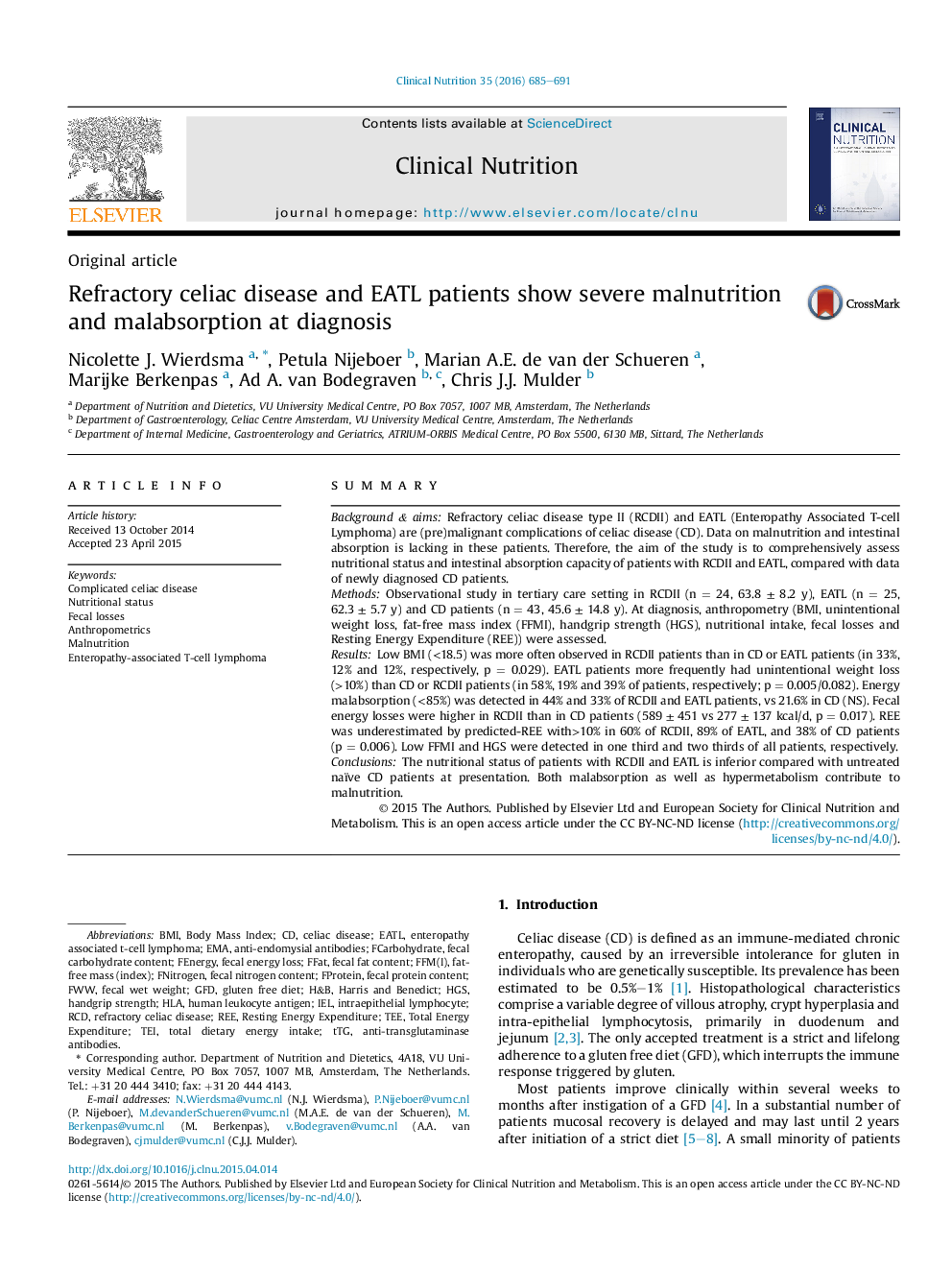| Article ID | Journal | Published Year | Pages | File Type |
|---|---|---|---|---|
| 5871676 | Clinical Nutrition | 2016 | 7 Pages |
SummaryBackground & aimsRefractory celiac disease type II (RCDII) and EATL (Enteropathy Associated T-cell Lymphoma) are (pre)malignant complications of celiac disease (CD). Data on malnutrition and intestinal absorption is lacking in these patients. Therefore, the aim of the study is to comprehensively assess nutritional status and intestinal absorption capacity of patients with RCDII and EATL, compared with data of newly diagnosed CD patients.MethodsObservational study in tertiary care setting in RCDII (n = 24, 63.8 ± 8.2 y), EATL (n = 25, 62.3 ± 5.7 y) and CD patients (n = 43, 45.6 ± 14.8 y). At diagnosis, anthropometry (BMI, unintentional weight loss, fat-free mass index (FFMI), handgrip strength (HGS), nutritional intake, fecal losses and Resting Energy Expenditure (REE)) were assessed.ResultsLow BMI (<18.5) was more often observed in RCDII patients than in CD or EATL patients (in 33%, 12% and 12%, respectively, p = 0.029). EATL patients more frequently had unintentional weight loss (>10%) than CD or RCDII patients (in 58%, 19% and 39% of patients, respectively; p = 0.005/0.082). Energy malabsorption (<85%) was detected in 44% and 33% of RCDII and EATL patients, vs 21.6% in CD (NS). Fecal energy losses were higher in RCDII than in CD patients (589 ± 451 vs 277 ± 137 kcal/d, p = 0.017). REE was underestimated by predicted-REE with>10% in 60% of RCDII, 89% of EATL, and 38% of CD patients (p = 0.006). Low FFMI and HGS were detected in one third and two thirds of all patients, respectively.ConclusionsThe nutritional status of patients with RCDII and EATL is inferior compared with untreated naïve CD patients at presentation. Both malabsorption as well as hypermetabolism contribute to malnutrition.
